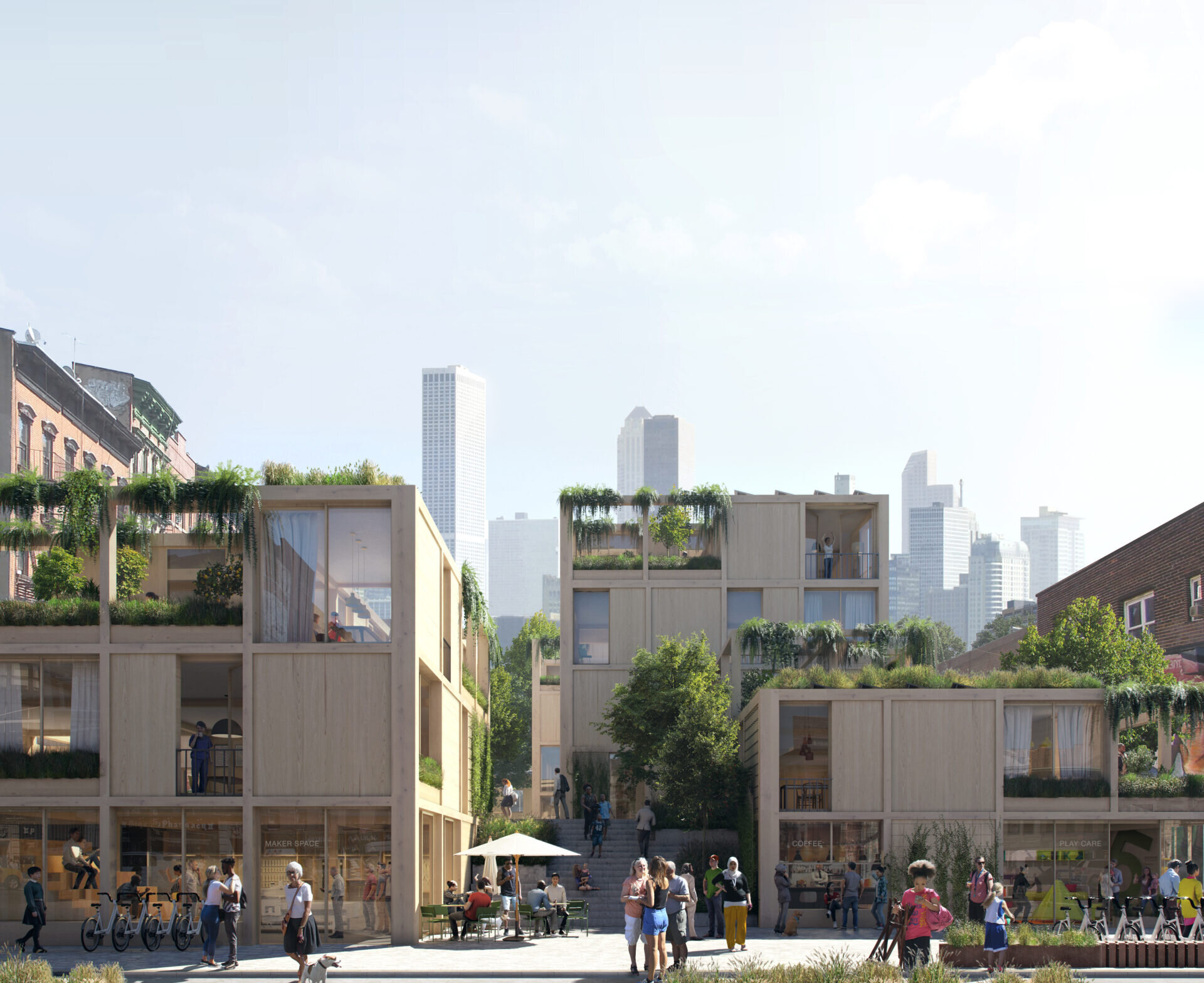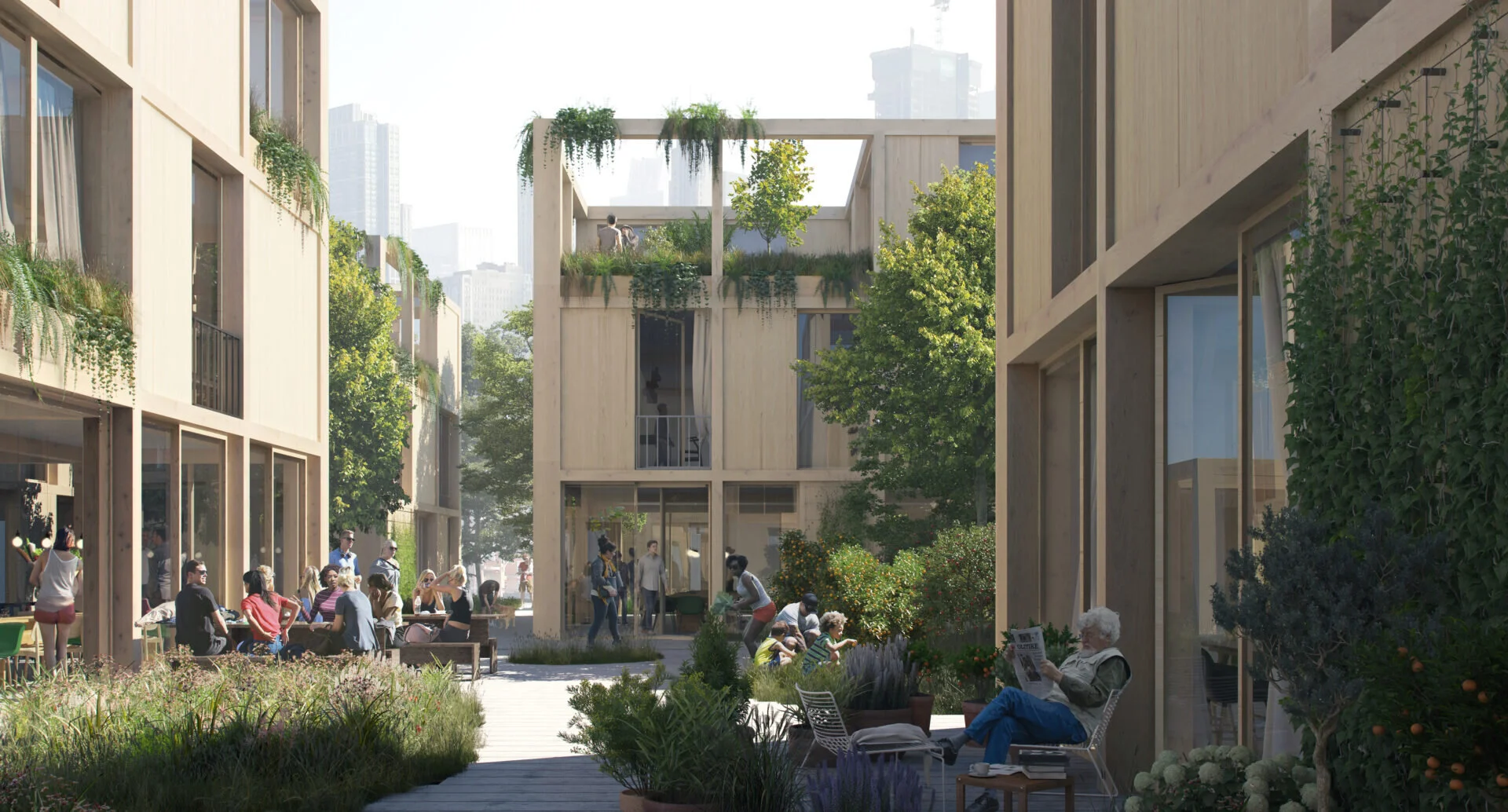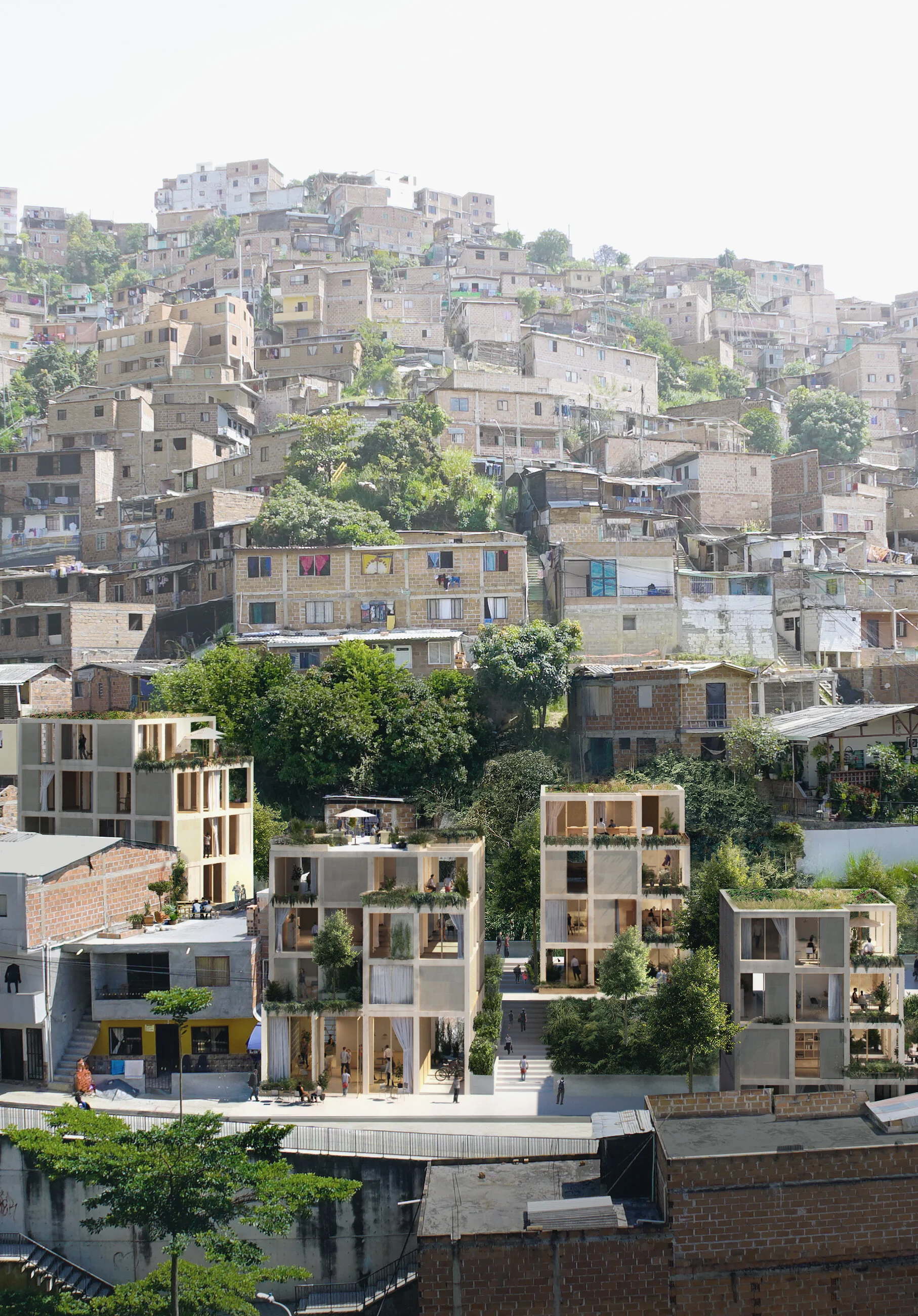From Vision to Strategy: Why IKEA’s Urban Village Project is the Perfect Testbed for Urban Innovation
Sometime between late 2018 to early 2019, when I began collecting resources and digesting information about small-scale modular construction for emergency shelters in Oakland, I stumbled upon the Urban Villages Project. Before I dive in, I'll give you an intro.
If you've spent any time with me on a road trip or any long car ride, you've likely heard about my modular town idea — a simple experiment where residents are given identical parcels of land and are able to build their homes from scratch like shopping for furniture or customizing a car. The simplicity of standardized, plug-and-play components, with lego-like levels of creativity and expression was something that always intrigued me.
A Thousand Yards Pavilion by Precht
Although this idea has never really jumped from vision to strategy, the mission behind the concept impacted the origins of Bay Modular in many ways. My simple mission of creating affordable and accessible housing was always top of mind — during the research, throughout the prototype, and eventually as the catalyst for the business. Throughout the lengthy discovery process, long before the first Solo 2 ADU went into production, I simmered on the idea of the emergency shelter.
1. What am I trying to solve?
2. Why am I trying to solve it?
3. How will I solve it?
Although building a home and building an app require different skills and disciplines, they share a similar structure — Mission, Vision, Strategy. So I took a product-oriented approach and drafted each:
Mission: Create affordable housing for every person.
Vision: Manufacturing is the future of home construction. From small-scale shelters to large-scale multi-family buildings, utilizing modular design will define a new standard of buildings that is affordable, sustainable, and livable.
Strategy: Designing a modular building system that reduces the number of unique parts and components, increases the speed of fabrication and on-site installation, and provides a scalable methodology for assembly across all models.
Urban Village Project by Space10 & EFFEKT Architects
When I discovered the Urban Villages Project, likely through designboom or ArchDaily, I was hooked. The team behind Space10 and EFFEKT Architects in Denmark had crafted such a beautiful vision statement for UVP — an almost-utopian image where sustainable, wood-built modular structures fit seamlessly into city cores, with lighting that reflected perfectly off the moving figures in a connected community, all set within a system of structures that fit together just like legos, providing residents every possible facility or service they need on a daily basis. Most importantly, the project had a clear problem and a clear vision.
The problem:
Our cities are facing some of the biggest challenges to date—from rapid urbanisation to ageing populations, from a climate emergency to increasing feelings of loneliness and anxiety in our urban environments. On top of that, we experience rising and unpredictable housing prices in cities all around the world and the prospects are bleak. We need to almost double our cities in just a few decades to house a rising urban population—which creates a strong link between how we choose to evolve our urban areas and the fate of humanity. Therefore, we need to rethink our built environment, starting now.
The vision:
The Urban Village Project rethinks how we design, build, finance and share our future homes, neighbourhoods and cities. The aim is to allow for cheaper homes to enter the market, make it easier to live sustainably and affordably, and ensure more fulfilling ways of living together.
But today, the biggest challenge for UVP is taking that leap from vision statement to product strategy. In this process, understanding and revisiting the vision statement is crucial. Not only should it be inspiring, compelling, and empowering, but it needs to be persuasive.
I've said it before and I'll say it again: No product can be made in isolation.
You can't solve problems for others by creating products that focus on the perceived experience. To take the next step, UVP needs to take a step back and ask mission-critical questions:
Since UVP buildings will live in cities, which parts of this 3-prong vision are subject to the most outside pressure and regulation?
If UVP buildings introduce an Internet-first approach to community living, which communities would be best suited for a shift in the living experience?
Since UVP buildings will focus on affordability, livability, and sustainability, will costs and margins make sense in a spreadsheet before a single panel of CLT is ever ordered?
The UVP mission is inspiring, but will the grandness of its vision statement overwhelm the ability to execute on a unified strategy? Are there ways to test segments of the vision in smaller markets to quantify outcomes?
Earlier this year, I had the fortune of meeting the UVP lead at Space10 over Google Meet. We discussed the status of the project, potential timelines, and shifts in goals, guideposts, and realities. As with most projects in 2020, conceptual or not, the Covid-19 pandemic put a damper on productivity and feasibility, drawing many projects to a halt. Although I cannot speak for the Space10 or EFFEKT regarding the future of the project, it's something I continue to root for to see in our future.
In light of dramatic changes to our urban life directly caused by the pandemic, the Urban Village Project is confronted with a unique opportunity to launch a completely new way of living from scratch at a time when people who've moved out of city cores are slowly trickling in, where rental prices tanked but housing prices soared, and where a focus on safer, more livable cities has never been greater.
I’ll share more on a phased approach for the Urban Villages Project in a future post. Throughout my time working on Bay Modular, I've spent many months thinking on urban planning, policy, and the housing problems that face our communities and local economies. When it comes to affordability and accessibility, I've always thought UVP would be a brilliant test bed for new ideas, both physical and digital.





